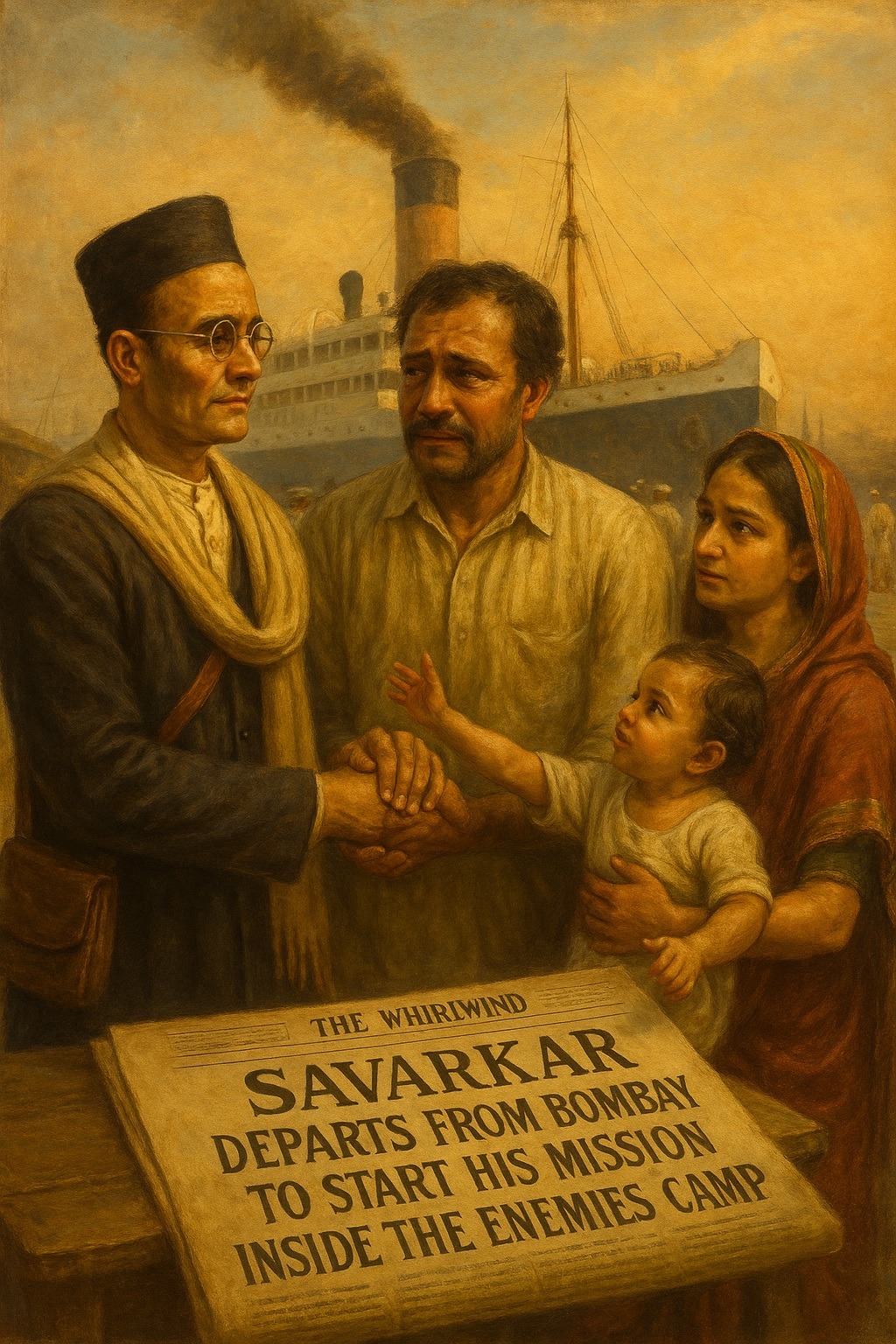On 9 June 1906, Vinayak Damodar (Veer) Savarkar embarked from Bombay aboard the steamer S.S. Persia. While the immediate purpose of this journey was formally described as pursuing higher studies in England, its deeper significance lay elsewhere. For Savarkar, this was not merely a student’s sojourn abroad but a deliberate and strategic entry into the very epicenter of colonial power — the “enemy’s camp.” His intent was to cultivate intellectual resources, forge revolutionary connections, and prepare for the protracted struggle against British imperial rule.
A Farewell at the Docks
The departure was marked by a scene charged with both intimacy and historical weight. At the bustling Bombay harbor, Savarkar was accompanied by his elder brother Babarao, his young wife Yamuna, and their infant son Prabhakar (born in September 1905). Several friends and well-wishers also assembled, their presence a testament to both affection and apprehension.
The farewell was not merely familial. For those who gathered, Savarkar’s journey symbolized something larger — the conscious embrace of risk and sacrifice in pursuit of national emancipation. Even if its full implications were only partially grasped at the time, there was a clear recognition that he was stepping into the lion’s den, intent on striking at the ideological and institutional core of empire.
The Weight of Departure
As the vessel drew away from the harbor, Savarkar is described as gazing steadily at the diminishing shoreline of his homeland. Beneath his composure, however, lingered questions that haunted many revolutionaries of his generation:
- Would he live to return to India?
- Would he again behold the faces of his family and comrades?
- Or would his path culminate in exile, imprisonment, or martyrdom on foreign soil?
Such reflections were not idle uncertainties but part of the existential calculus of anti-colonial struggle. To embark on this mission was to accept, implicitly, the possibility of personal annihilation for the sake of collective liberation.
The Beginning of a Larger Mission
Yet these doubts did not diminish his resolve. On the contrary, they illuminated the profound seriousness of the mission he had undertaken. With Savarkar aboard, the S.S. Persia carried more than a young aspirant of legal studies; it bore the early contours of a revolutionary project that would transcend national boundaries.
Savarkar’s departure in 1906 thus represents a pivotal juncture — the beginning of a transnational career that would render him one of the most audacious and uncompromising figures of the Indian freedom struggle. His journey to England was not an escape from the colonial periphery but an entry into its metropolitan core, where he sought to turn the empire’s own space into a theater of resistance.
In retrospect, this voyage can be seen as both personal and political: a moment of farewell and familial rupture, and at the same time the inauguration of a mission that would mark Savarkar as a symbol of defiance, courage, and unyielding patriotism within the broader narrative of India’s nationalist awakening.
In what ways did Savarkar’s departure for England in 1906 mark a turning point in the intellectual and organizational strategies of the Indian nationalist movement? How might the emotional scene at the Bombay docks illustrate the intersection of personal sacrifice and political commitment in anti-colonial struggles? To what extent can Savarkar’s choice to enter the “enemy’s camp” be interpreted as both a symbolic gesture and a pragmatic strategy? 👉 Share your thoughts in the comments below!
Sources:
SAMPATH, Vikram. 2019. Savarkar (Part 1). Echoes from a forgotten past. 1883-1924. Penguin Random House India: Gurgaon.
SAVARKAR, Vinayak Damodar. 1993. Inside the enemy camp. Veer Savarkar Prakashan: Mumbai.


Leave a Reply